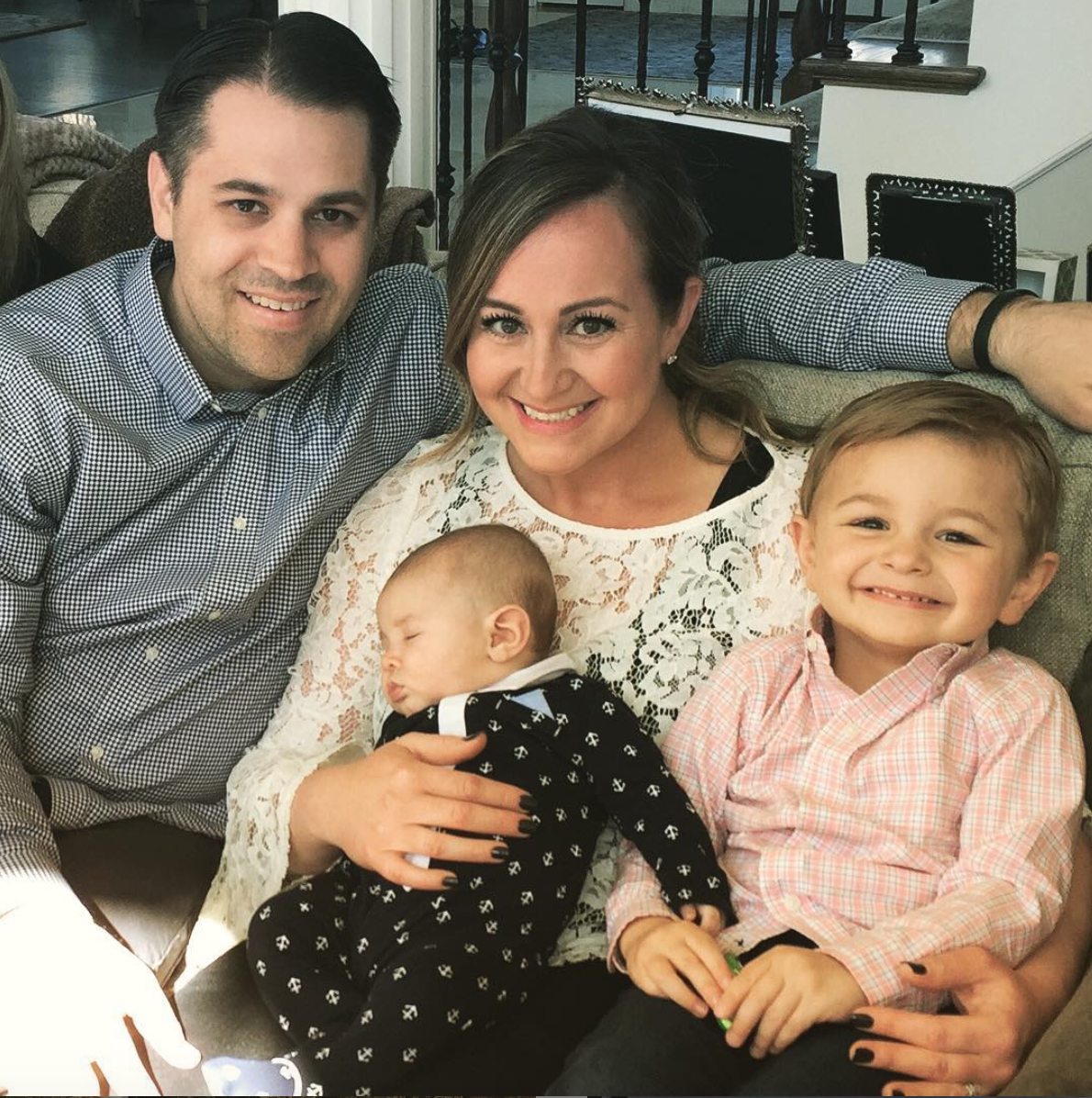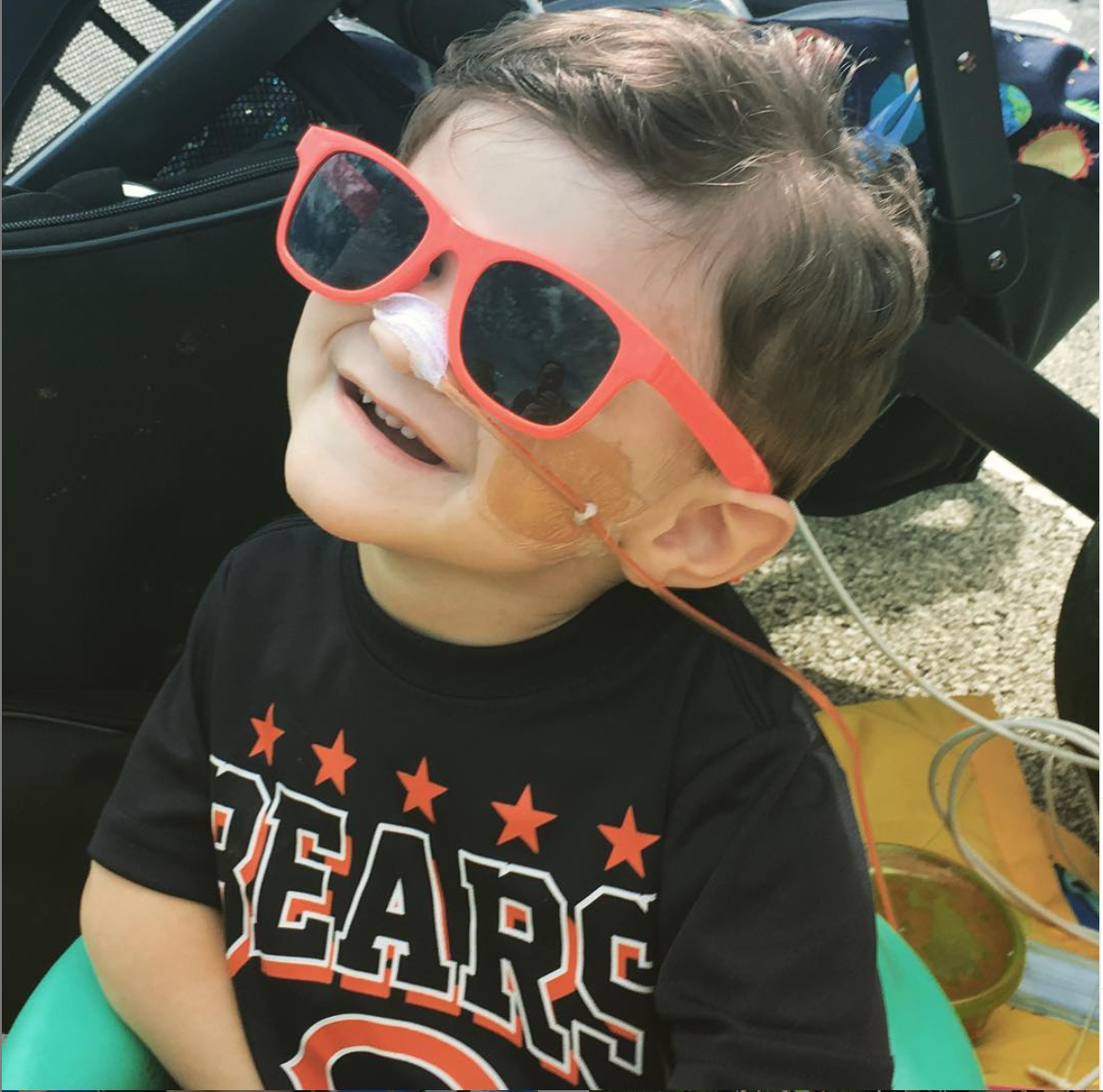
If Brittany Stineman were to give any advice about handling the highs and lows of a kid with a rare disease, it would be to trust your gut.
"If you feel like something is wrong with your kid, speak up. If you aren't buying it you have choices and the option to say no," she says. "Ask questions, and most importantly trust your maternal instinct."
Brittany and Bobby Stineman welcomed their second child, a little boy named Nash, in 2016. He was born at 36 weeks just like their older son, Blake, but weighed significantly less at birth, 4 lb. 12 oz. He seemed to be just your average preemie—eating normally and growing appropriately—but just before he turned 6 months old, they started to notice he was severely failing to thrive even though he was eating age-appropriately.
"Because he was so small at birth and I was traumatized by that, I was always looking for things even though they were pretty much normal," Stineman says.
Soon after that, he had a foot drop, a gait abnormality that is often a sign of weakness, and then came the breathing problems. Something wasn't right.
The Stinemans, who live in suburban Chicago, spent seven months in and out of various children's hospitals in the Midwest, with countless tests, two surgeries, and a number of different diagnoses.
After being discharged they went back to the hospital and met with a rare disease doctor who did more tests and the family continued to face extreme ups and downs with scary respiratory failures, and tons of trial and error along the way. It was Stineman's maternal instinct and the support of her husband that kept them pushing for answers.

An extremely rare diagnosis
Nash's diagnosis eventually came through exome sequencing, where geneticists looked specifically for diseases that caused diaphragm paralysis (another symptom Nash experienced) identifying the mutation of gene IGH MBP2, which causes a rare genetic disease called Spinal Muscular Atrophy with Respiratory Distress—SMARD or SMARD1. Both Brittany and her high school sweetheart husband were carriers of the mutated gene, told that this diagnosis was "as rare as winning the lottery."
Nash is the only patient in Illinois with the disease and the number of total patients across the world is less than 100.
"SMARD is vanishingly rare," says John Brandsema, M.D., a pediatric neurologist at Children's Hospital of Philadelphia, "so rare that this is something neuromuscular physicians may see once or never in their career." Only four cases have come through Dr. Brandsema's well-known neuromuscular center.
He goes on to say that it often takes a long time to diagnose the disease as in the Stinemans experience. "Because of the rarity, it is often not on the doctor's forefront when diagnosing breathing problems or other issues, which can be a huge stressor to families."

Nash continues to fight
Nash can't fully function like a normal 2-year-old. He can speak about 15 words but communicates primarily through sight and gestures. He gets all of his nutrition through total parenteral nutrition (TPN), intravenously. He can sit up on a good day but can't walk. Other kids with the disease are trached and vented (meaning they breathe through a hole in their throat with the help of a machine) and have very limited muscular mobility. Like any rare disease, progression and life expectancy can vary greatly.
Because the disease impacts so many different functions of the body, it often requires a multi-disciplinary team to provide care. In Nash's case, this includes a slew of physicians including a neuromuscular doctor, a pulmonologist, immunologist, gastroenterologist, hematologist, metabolic geneticist, and pediatrician. He is able to live at home with his family but has therapists visit throughout the week including speech (both verbal and visual communication), occupational, physical, and developmental.
A nurse comes Monday through Friday 7 a.m. to 4 p.m. and Stineman is able to take their other son Blake to school and out on some extra-special playdates. Their day-to-day is very atypical for a family with two toddler boys, but it's important to retain some sense of normalcy for Blake, although, as Stineman says, "he loves his brother so much and understands he comes with some strings attached."
On a mission to #SmashSMARD
Regular genetic testing does often include the more common form of Spinal Muscular Atrophy (5Q SMA) which sounds similar but presents differently. This is a struggle for parents and patients of SMARD who try to educate others about the disease.
"One of the main differences between the diseases is that respiratory issues tend to come first, muscular come later," says Dr. Brandsema.
A SMARD diagnosis is a devastating one—there is currently no cure. But this hasn't stopped the Stinemans from fighting like hell and utilizing all of their resources.
In 2017, the family was given a glimmer of hope meeting researchers in Columbus, Ohio who were actively testing gene therapy for SMARD in mice. There had been some success already with a similar therapy for the more common forms of SMA. The gene therapy would actually involve a gene transfer attached to a common cold that, if it works in patients, could slow down, stop, or possibly reverse symptoms of the disease. Studies like this are expensive, upward of three million dollars to conduct.
So instead of sitting idly by, the Stinemans started a 501c3 to raise money and awareness for the disease called Smash SMARD. With the reality of a human trial as early as January 2020, they tapped into their vast network of friends and colleagues and created the #smashSMARD campaign, a social media campaign similar to the ALS ice bucket challenge where people smash pies or plates of whipped cream to raise both awareness and money for the disease.
So far they've raised almost $300,000 through the campaign and other fundraising efforts. Celebrities like Dallas Mavericks player Jalen Brunson, former Bachelor Michael Stagliano, and the University of Louisville soccer team have all participated in the challenge.
"If everyone seeing the challenge donated $5, we could meet our goal," she says.
The Stinemans actively manage the non-profit all while coordinating Nash's care.
Although they know this is a race against the clock with a disease like this, Brittany is never going to back down.
"No matter the outcome, nobody will ever say we didn't do everything possible to fight for our kid."
To learn more about SMARD, participate in the challenge, or donate to the cause, visit www.smashsmard.org.

